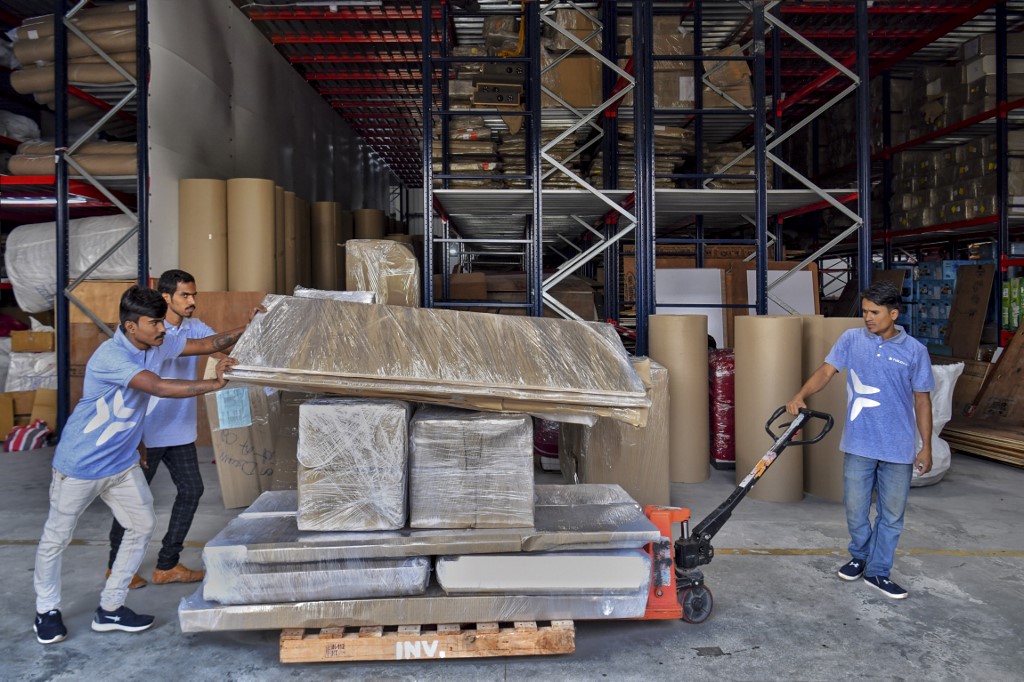
Source: Shutterstock
Indian e-commerce — tech powered logistics drives record year
- India’s warehousing and supply chain trends have witnessed major shifts in 2020, driven by the changing consumer expectations in e-commerce
The major shift in consumer behavior this year towards e-commerce is occurring in India too. Many are trying out online shopping and contactless payments and deliveries for the first time ever as the pandemic reduces consumers’ reliance on traditional retail. Changes in consumer expectations and worldwide disruptions have, at the same time, drastically altered global supply chains and logistics operations.
In India, e-commerce platforms were more often the go-to for luxury items and lifestyle good purchases, but in 2020, there’s been a shift towards shopping for essentials like groceries, medication, and school & office supplies instead, highlighting a rising reliance by a broader set of customers. In the Unicommerce E-commerce Trends Report 2020, the so-called Tier 2 and Tier 3 cities in the country have seen explosive growth of over 90%, with the e-commerce sector experiencing a rise in order volume of 31% for Q3 2020, compared to the same period in 2019.
And not to be outdone by the consumer sector, there are at least 14 million users fueling India’s business-to-business (B2B) e-commerce market, which is expected to reach US$700 plus billion from the $525 billion market it is right now.
It’s estimated that US$64 billion out of India’s US$2.6 trillion GDP this year will come from the e-commerce market. And all this despite the manufacturing and labor shortages, transport disruptions, and other delays characterizing one of the most difficult years affecting supply chains worldwide.
Instead, India’s warehousing and logistical sectors have turned their focus to fulfilling the rise in e-commerce customer expectations like faster delivery times, order customization, and better return policies to name a few. And this rapid turnaround for such a demanding sector would not have been possible without adopting some key technologies.

Changing consumer expectations in e-commerce will see tech driving change in India’s warehousing and supply chains. Source: AFP
AI in automation
Automation has been playing a larger role in transforming warehouse technology for a while now, but artificial intelligence (AI) add-ons can vastly improve mechanical processes and efficiencies.
Some instances where AI can enhance labor-intensive or repetitive tasks are in self-managing inventory systems, automated picking and packing, autonomous robots for physical work, self-driving vehicles like forklifts, and automated storage and retrieval (ASRS) operations.
Blockchain and big data
Leveraging blockchain and big data to manage complex supply chains can help predict demand surges, speed up operational efficiency, and get goods out the door faster by studying analytical insights on the end-to-end supply chain visibility, and optimizing processes where needed.
Storing all the data on the blockchain helps ensure a trusted, verifiable record of all operational processes and logs are stored securely and can be accessed seamlessly when it comes to checking inventory, deliveries, and other data.
IoT Integrations
Integrating digitized solutions to solve logistical headaches is one of the main things helping push the ongoing digitalization of small businesses involved in e-commerce. The internet-enabled applications are collectively referred to as the internet of things (or IoT), and these ‘smart’ devices like sensors, wearables, and surveillance devices can help to track and monitor warehouse equipment.
IoT-enabled systems can also monitor the factory or the distribution center at large, being integrated into the machinery and surveillance equipment like CCTVs or sensors, and can report back changes in operational performance, even report on if maintenance schedules have been carried out.
Improving the last mile
When it comes to the logistics of the supply chain, the impact of e-commerce will be most noticeable in executing last-mile deliveries and improving customer experiences that way. The pandemic not only brought to the fore the need to push contactless deliveries and to downplay Cash on Delivery, but it also brought about surge in demand for FMCG products, delivered either the same-day or quicker than pre-pandemic.
Tech adoption to improve last-mile deliveries will focus around the new product categories that have been thrust in the spotlight over the past few months, such as enabling a temperature-controlled supply chain to deliver perishable food items or time-sensitive medications.
READ MORE
- Ethical AI: The renewed importance of safeguarding data and customer privacy in Generative AI applications
- How Japan balances AI-driven opportunities with cybersecurity needs
- Deploying SASE: Benchmarking your approach
- Insurance everywhere all at once: the digital transformation of the APAC insurance industry
- Google parent Alphabet eyes HubSpot: A potential acquisition shaping the future of CRM


